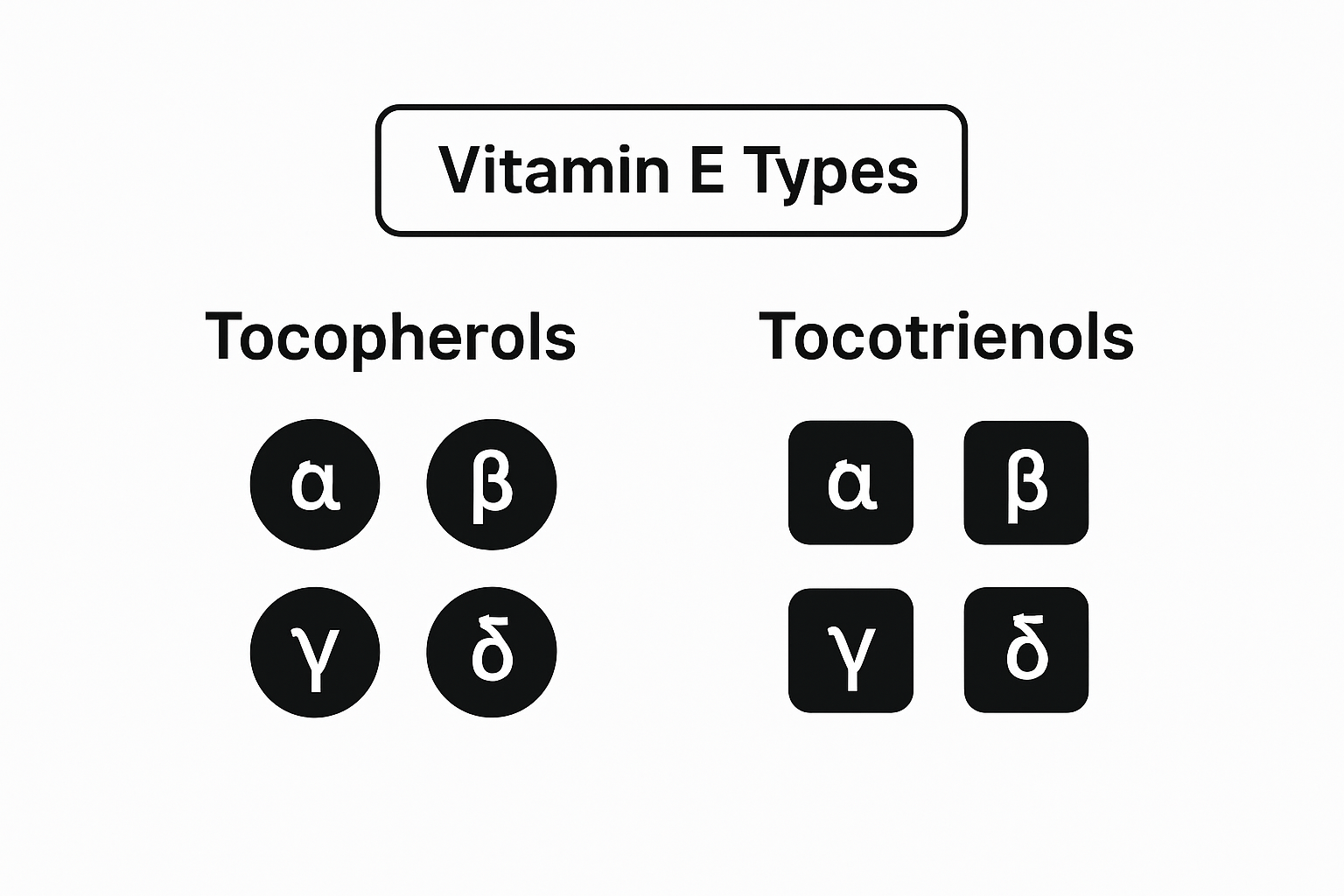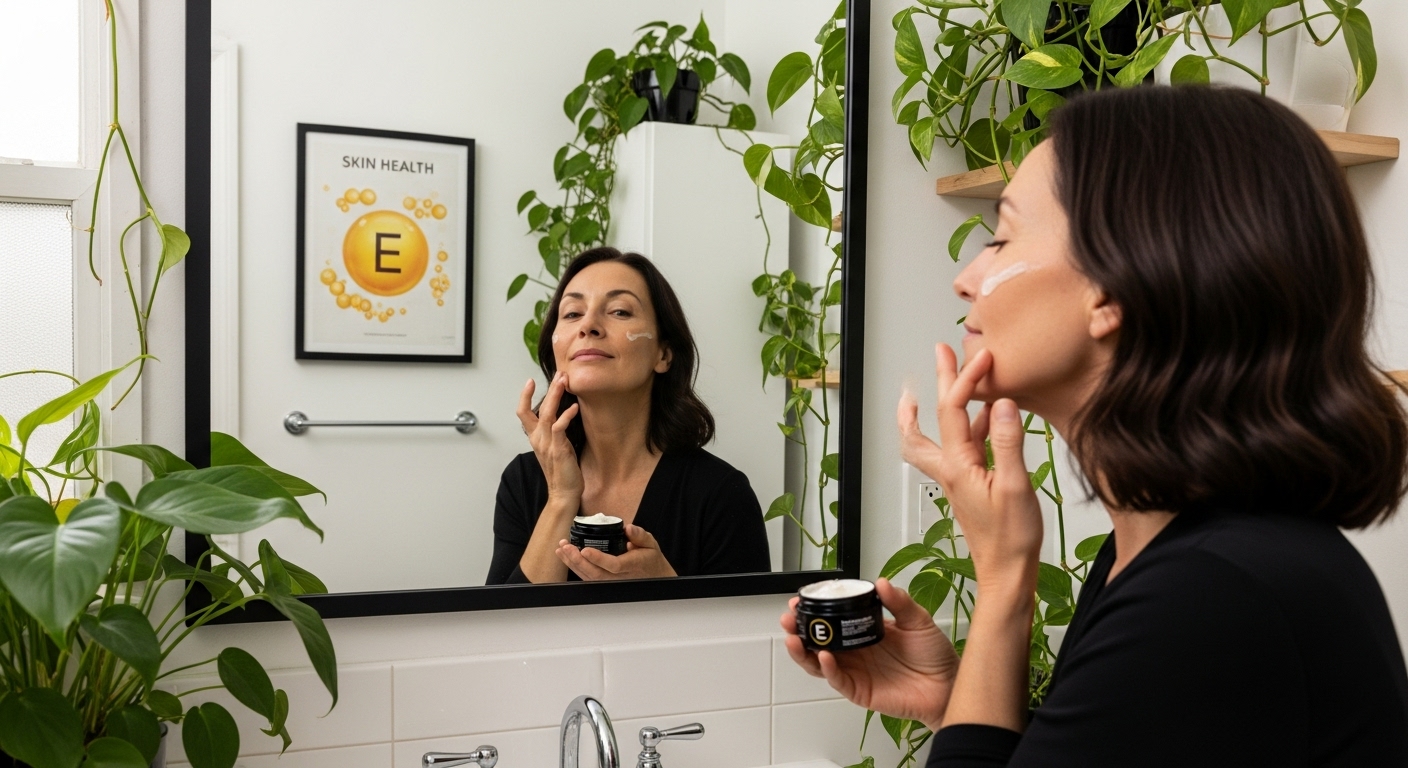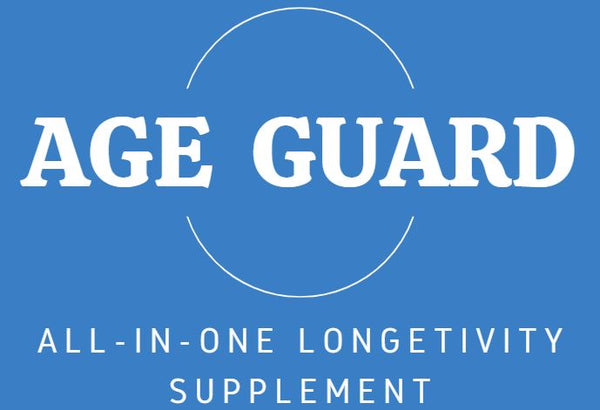
Understanding the Role of Vitamin E for Longevity
Share
Vitamin E gets a lot of attention for its role in health, and most people know it’s good for more than just your skin. But did you know vitamin E isn’t a single nutrient, but a family made up of eight different molecules, each with unique benefits? In fact, alpha-tocopherol is the most biologically active form and the main type your body uses, yet that’s just one piece of a much bigger puzzle when it comes to how this antioxidant supports longevity and cellular strength.
Table of Contents
- What Is Vitamin E And Its Types?
- Why Vitamin E Matters For Health And Longevity
- How Vitamin E Functions At The Cellular Level
- The Impact Of Vitamin E On Skin Health And Aging
- Sources Of Vitamin E And Optimal Intake
Quick Summary
| Takeaway | Explanation |
|---|---|
| Vitamin E is a vital antioxidant. | It protects cells from oxidative stress and free radical damage, which can lead to aging and chronic diseases. |
| Alpha-tocopherol is the most effective form. | This form of vitamin E is recognized by the body for its biological activity and antioxidant capabilities. |
| Diet is key for vitamin E intake. | Foods like nuts, seeds, and vegetable oils are rich sources, providing necessary nutrients to support health. |
| Supports cardiovascular and immune health. | Vitamin E plays a crucial role in maintaining heart health and enhancing the immune system’s resilience against aging-related declines. |
| Consult healthcare professionals before supplementation. | Individual needs for vitamin E may vary, and proper guidance is necessary to avoid inappropriate dosages. |
What is Vitamin E and Its Types?
Vitamin E represents a powerful group of fat-soluble antioxidants that play a critical role in protecting cellular health and supporting longevity. Unlike water-soluble vitamins that get excreted quickly, vitamin E is stored in fatty tissues and the liver, allowing for sustained protective mechanisms within the human body.
Chemical Composition and Variants
Vitamin E is not a single compound but a family of eight distinct molecules divided into two primary categories: tocopherols and tocotrienols. Each category contains four chemical variants: alpha, beta, gamma, and delta.
 According to National Institutes of Health research, alpha-tocopherol is the most biologically active form recognized by human metabolic processes.
According to National Institutes of Health research, alpha-tocopherol is the most biologically active form recognized by human metabolic processes.
The eight variants of vitamin E differ slightly in their molecular structure, which influences their antioxidant capabilities and interactions within cellular environments. While all forms provide protective benefits, alpha-tocopherol remains the most studied and prevalent in human supplementation and dietary recommendations.
The following table organizes the eight distinct molecules of vitamin E into their main categories and highlights their core features to clarify differences among them.
| Category | Variant Name | Key Characteristics |
|---|---|---|
| Tocopherol | Alpha-tocopherol | Most biologically active form, primary dietary supplement source |
| Tocopherol | Beta-tocopherol | Structural variant, antioxidant properties |
| Tocopherol | Gamma-tocopherol | Abundant in some diets, unique antioxidant activity |
| Tocopherol | Delta-tocopherol | Less studied, additional antioxidant support |
| Tocotrienol | Alpha-tocotrienol | Distinct antioxidant functions, emerging research focus |
| Tocotrienol | Beta-tocotrienol | Minor dietary source, antioxidant activity |
| Tocotrienol | Gamma-tocotrienol | Studied for neuroprotective and cardiovascular benefits |
| Tocotrienol | Delta-tocotrienol | Potential cardiovascular support, less commonly consumed |
Functional Mechanisms of Vitamin E
At its core, vitamin E functions as a potent antioxidant that neutralizes harmful free radicals in the body. Free radicals are unstable molecules that can damage cellular structures, accelerate aging processes, and contribute to chronic disease development. By donating electrons to these unstable molecules, vitamin E helps prevent oxidative stress and cellular degradation.
The antioxidant properties of vitamin E extend beyond simple molecular protection. Research suggests it plays crucial roles in:
- Supporting immune system functionality
- Preventing cellular membrane damage
- Potentially reducing inflammation
- Supporting cardiovascular health
- Protecting cellular membranes from lipid peroxidation
Understanding the complex nature of vitamin E reveals why this nutrient is fundamental to maintaining optimal health and potentially influencing longevity markers. Its multifaceted role in cellular protection makes it a critical component of comprehensive wellness strategies.
Why Vitamin E Matters for Health and Longevity
Vitamin E emerges as a powerful guardian of cellular health, playing a pivotal role in promoting longevity and protecting the body against age-related deterioration. Its significance extends far beyond basic nutritional support, representing a critical component in the complex mechanisms of aging and cellular preservation.
Cellular Protection and Aging Mechanisms
At the molecular level, vitamin E acts as a robust defense system against oxidative stress—a primary driver of cellular aging. Research from the National Library of Medicine indicates that adequate vitamin E status can significantly modulate immune function and reduce inflammatory processes associated with aging. The ability to neutralize free radicals prevents cumulative cellular damage that contributes to chronic diseases and accelerated aging.
The protective capabilities of vitamin E are particularly noteworthy in preserving cellular membrane integrity. By preventing lipid peroxidation, this remarkable nutrient helps maintain the structural and functional health of cells, potentially slowing down the natural degradation processes that occur with aging.
Comprehensive Health Benefits
Vitamin E’s impact on longevity extends across multiple physiological systems. Its multifaceted benefits include:
- Supporting cardiovascular health by preventing oxidation of low-density lipoproteins
- Enhancing immune system resilience
- Protecting neurological function and potentially reducing cognitive decline
- Maintaining skin health and protecting against UV-induced damage
- Supporting eye health and potentially preventing age-related vision deterioration
For those interested in understanding the broader role of vitamins in aging, vitamin E represents a crucial piece of the longevity puzzle. Its ability to combat oxidative stress makes it a key nutrient in comprehensive wellness strategies aimed at promoting healthy aging and extending health span.
This table summarizes the main health benefits of vitamin E across various body systems, providing a quick overview of its impact on longevity and wellness.
| Area of Health | Key Benefit | Explanation |
|---|---|---|
| Cardiovascular | Prevents LDL oxidation | Supports heart health and reduces disease risk |
| Immune System | Enhances immune resilience | Modulates inflammation and immune response |
| Neurological | Protects cognitive function | May reduce risk of age-related cognitive decline |
| Skin | Shields against UV and supports repair | Reduces aging signs and maintains skin integrity |
| Eyes | Supports vision | May help prevent age-related deterioration |
| General Cellular | Reduces oxidative damage and supports healthy aging | Maintains cellular integrity throughout the body |
Ultimately, vitamin E transcends its role as a simple nutritional supplement. It stands as a sophisticated molecular guardian, working tirelessly to protect cellular structures, modulate inflammatory responses, and potentially mitigate the progressive damage associated with aging. By supporting its intake through diet and targeted supplementation, individuals can take a proactive approach to maintaining cellular health and optimizing their longevity potential.
How Vitamin E Functions at the Cellular Level
Vitamin E operates as a sophisticated molecular guardian, executing complex protective mechanisms within cellular environments that are fundamental to maintaining health and preventing premature aging. Its intricate functions extend far beyond simple nutritional support, representing a critical defensive strategy against cellular deterioration.
Antioxidant Defense Mechanisms
Research from cellular biology studies reveals that vitamin E functions primarily as a powerful antioxidant, neutralizing harmful free radicals that can cause significant cellular damage. By donating electrons to unstable molecules, vitamin E interrupts destructive oxidative chain reactions, thereby preventing lipid peroxidation and protecting cellular membranes from structural compromise.
The molecular structure of vitamin E allows it to integrate directly into cell membranes, creating a protective shield that intercepts potential oxidative threats.
This unique positioning enables it to prevent lipid oxidation before damage can occur, maintaining the integrity and functionality of cellular structures.
Cellular Signaling and Gene Expression
Beyond its antioxidant role, vitamin E plays a nuanced part in cellular communication and genetic regulation. It influences critical cellular processes by:
- Modulating inflammatory response pathways
- Regulating gene expression related to cellular health
- Supporting mitochondrial function and energy production
- Preventing premature cellular senescence
- Enhancing cellular stress resistance mechanisms
For those interested in understanding how nutrients interact with cellular processes, exploring cellular health boosters can provide deeper insights into these intricate biological mechanisms.
Vitamin E’s ability to interact with cellular signaling networks demonstrates its sophisticated role in maintaining physiological balance. By fine-tuning gene expression and supporting cellular resilience, it acts as more than just a simple nutrient—functioning as an intelligent molecular guardian that helps protect and optimize cellular performance throughout the aging process.
The Impact of Vitamin E on Skin Health and Aging
Vitamin E emerges as a critical ally in maintaining skin health and combating the visible signs of aging, offering a multifaceted approach to preserving skin’s youthful appearance and resilience. Its powerful molecular mechanisms provide comprehensive protection against environmental and intrinsic aging factors.
Photoprotection and UV Defense
Research from molecular sciences reveals vitamin E’s remarkable ability to shield skin cells from ultraviolet radiation damage. By neutralizing free radicals generated through sun exposure, vitamin E prevents oxidative stress that accelerates skin aging, protecting cellular structures and maintaining skin’s structural integrity.
The antioxidant properties of vitamin E create a molecular defense mechanism that goes beyond surface-level protection. By intercepting harmful reactive oxygen species, it helps prevent collagen degradation and supports the skin’s natural repair processes, effectively slowing down premature aging mechanisms.
Cellular Regeneration and Skin Barrier Function
Vitamin E plays a crucial role in supporting skin cellular regeneration and maintaining optimal barrier function. Its key contributions include:
- Promoting skin cell membrane stability
- Reducing inflammation and supporting healing processes
- Enhancing moisture retention capabilities
- Supporting natural collagen production
- Protecting against environmental pollutant damage
For those interested in deeper insights, understanding why antioxidants matter for skin can provide additional context about these protective mechanisms.
Beyond its immediate protective qualities, vitamin E demonstrates a profound ability to support long-term skin health. By modulating inflammatory responses and supporting cellular resilience, it acts as a sophisticated guardian against the cumulative damage that contributes to visible aging, helping maintain skin’s elasticity, smoothness, and overall youthful appearance.

Sources of Vitamin E and Optimal Intake
Navigating the landscape of vitamin E nutrition requires understanding its diverse sources and recommended consumption levels. While dietary intake plays a crucial role, strategic supplementation can help individuals optimize their vitamin E status and support long-term health and cellular protection.
Natural Food Sources
According to the National Institutes of Health, vitamin E is abundantly present in a variety of plant-based foods. The most potent natural sources include vegetable oils, nuts, seeds, and green leafy vegetables. These nutrient-rich foods provide different forms of vitamin E, with some offering more bioavailable alpha-tocopherol than others.
Key natural sources of vitamin E encompass:
- Sunflower, safflower, and wheat germ oils
- Almonds, hazelnuts, and peanuts
- Spinach and Swiss chard
- Avocados and butternut squash
- Kiwi fruit and mango
Recommended Daily Intake and Supplementation
The recommended dietary allowance (RDA) for vitamin E varies based on age, gender, and individual health conditions. Adults typically require approximately 15 milligrams (22.4 International Units) of alpha-tocopherol daily. However, individual needs can differ based on factors such as overall health, lifestyle, and existing medical conditions.
For those interested in understanding more about micronutrients and aging, exploring comprehensive nutritional strategies can provide deeper insights into optimal supplement approaches.
While food sources remain the primary recommendation, vitamin E supplements can bridge nutritional gaps for individuals with restricted diets, limited food access, or specific health requirements. However, it is crucial to consult healthcare professionals before starting any supplementation regimen to ensure appropriate dosage and compatibility with individual health profiles.
Transform Your Longevity Journey With Trusted Cellular Protection
Are you concerned about how oxidative stress and free radicals speed up aging and damage your cellular health? The article explains how vitamin E acts as a powerful antioxidant to protect your cells and support longevity. But daily diet alone might not always bridge the gap between your wellness goals and your body’s true needs. That is why so many are turning to proven strategies backed by science. Discover the solution trusted by those who want real progress in healthy aging. To see how research-backed formulas combine vitamin E with advanced micronutrients and antioxidants, explore Age Guard’s main page for product details, ingredient transparency, and real customer feedback.

Experience a supplement designed for people who want to protect their cellular health, boost energy, and support skin resilience. Visit MyAgeGuard.com now to access exclusive product offers and learn how Age Guard goes beyond basic nutrition with ingredients like NMN, collagen, and spermidine. Take proactive steps for your long-term cellular health today.
Frequently Asked Questions
What is Vitamin E and why is it important for health?
Vitamin E is a fat-soluble antioxidant that protects cellular health, supports longevity, and has multiple physiological benefits, including immune support and preventing oxidative stress.
What are the different types of Vitamin E, and which form is most effective?
Vitamin E consists of eight distinct molecules, divided into tocopherols and tocotrienols. Alpha-tocopherol is the most biologically active form recognized for its health benefits and is the most studied variant.
How does Vitamin E support skin health and combat aging?
Vitamin E protects skin from UV damage, enhances cellular regeneration, maintains moisture retention, and supports collagen production, all of which contribute to a youthful appearance and resilience against aging.
What are some natural food sources of Vitamin E, and how much do we need daily?
Natural sources of Vitamin E include vegetable oils, nuts, seeds, and green leafy vegetables. The recommended daily intake for adults is approximately 15 milligrams (22.4 International Units) of alpha-tocopherol.
